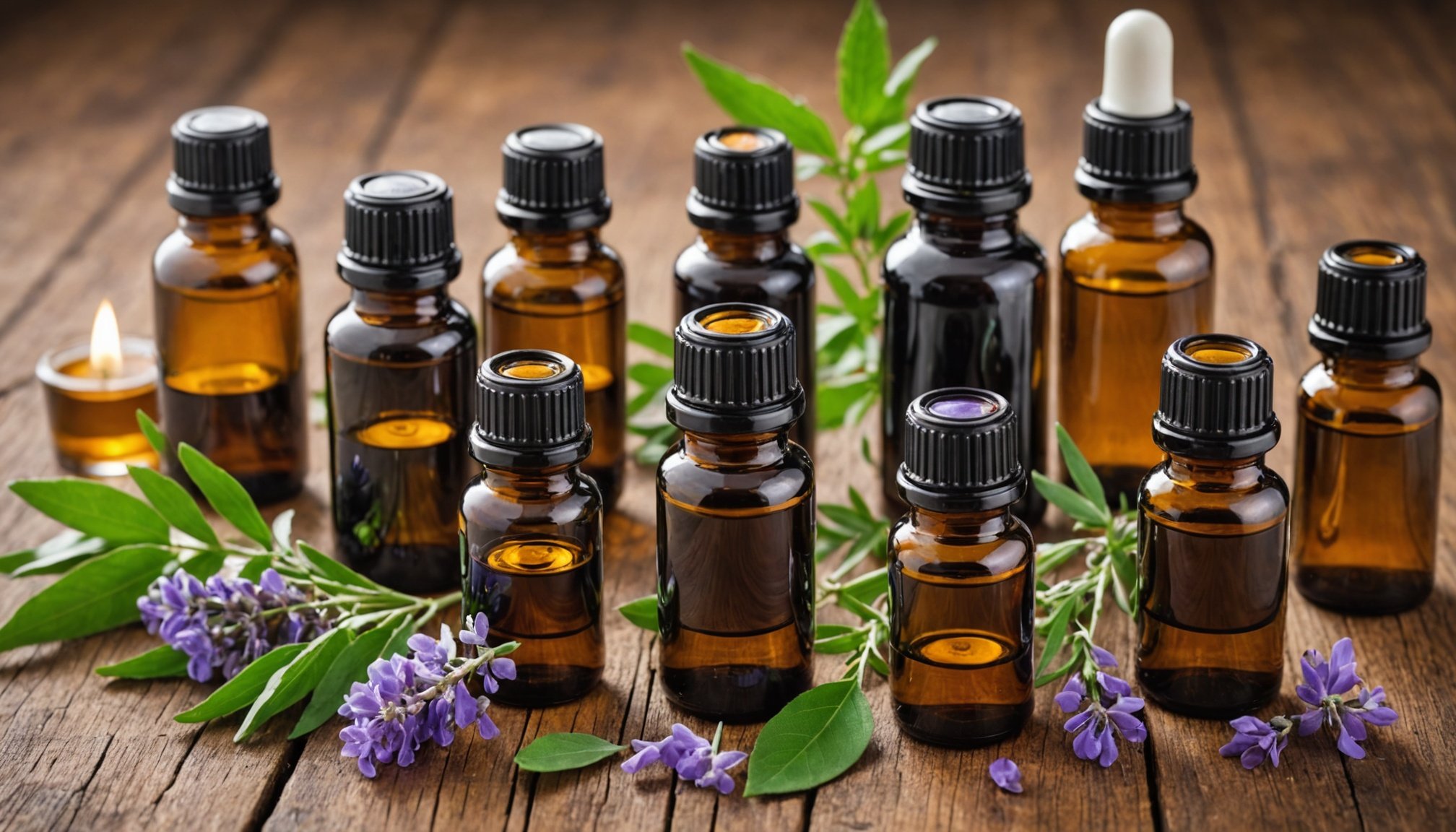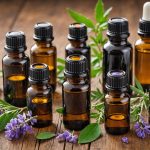Overview of Essential Oils for Scar Healing
Essential oils offer a promising path for scar healing, enhancing both appearance and skin health. Derived from natural plants, these oils are rich in compounds that can boost skin renewal. The properties of these oils, which include anti-inflammatory and regenerating benefits, make them appealing choices in natural skincare routines.
Many individuals turn to these remedies for a gentle and effective approach to address various types of scars. The benefits of essential oils like lavender and tea tree include boosting collagen production and reducing inflammation, both of which are crucial for healing scars. The significance of using such natural approaches lies in their ability to integrate seamlessly into daily skincare without harsh chemicals.
In the same genre : The ultimate guide to fabric softeners: elevate your elastic activewear for peak performance
Moreover, the ease of creating personalized blends allows users to tailor treatment-specific needs. This flexibility makes essential oils particularly popular among those seeking holistic health solutions. Incorporating these oils into a consistent regimen may improve the texture and appearance of scars. As understanding of their properties grows, essential oils continue to be a valuable addition to modern skincare practices.
Best Essential Oils for Scar Healing
When looking for top essential oils for scars, Lavender and Tea Tree often take centre stage. These oils are celebrated for their regenerative properties and ability to enhance skin regeneration. Lavender oil is especially known for soothing irritated skin, promoting relaxation, and accelerating the natural renewal process, making it an excellent choice for scar treatment.
Also read : Revitalize your skin overnight: craft your own anti-aging night cream with top natural ingredients at home!
Tea Tree oil, on the other hand, is renowned for its antibacterial properties. It helps in preventing infection in skin areas where scars are present, while also encouraging new tissue growth. Frankincense, another popular choice, is noted for its astringent qualities that tighten skin and promote cell turnover.
Comparative effectiveness indicates that while each oil has unique benefits, they collectively support the healing process by enhancing collagen production and reducing inflammation. Research and anecdotal evidence consistently highlight these oils’ roles in improving skin texture and appearance. Although anecdotal, many users report visible progress, reinforcing their efficacy. Each oil brings distinct advantages to scar healing, suggesting that customised blends could leverage these unique properties for optimal results.
Application Methods for Essential Oils
Effective application of essential oils is crucial for achieving desirable results in scar healing. Understanding various techniques can enhance your experience and outcomes significantly.
Direct Application Techniques
One common method involves direct application, but it’s essential to practice safe dilution. Before using oils like Lavender or Frankincense on your skin, combine them with a carrier oil such as coconut or jojoba. This not only aids in absorption but also minimises potential irritation.
Blending and Formulating
Creating blends tailored to your needs can amplify the benefits of essential oils for scars. For instance, a mix of Lavender, Tea Tree, and Frankincense can be combined with Vitamin E to enhance skin regeneration. Recipes often recommend starting with a base and gradually incorporating oils to achieve the desired potency.
Frequency and Timing of Application
Consistency maximises results. Applying oils twice daily, ideally after cleansing, can increase absorption rates and efficacy. Morning application invigorates the skin, while evening use allows oils to work overnight during peak skin renewal periods.
Incorporating these applications thoughtfully can transform your skincare routine, enhancing scar healing through natural, effective methods.
Safety Precautions and Considerations
When using essential oils for scars, understanding potential side effects is crucial. Some individuals may experience allergic reactions such as redness, itching, or irritation. To mitigate this, always conduct a patch test before full application. Apply a small amount of diluted oil on your forearm and wait 24 hours to detect any adverse reaction.
For pregnant or nursing women and children, extra caution is advised as they may have heightened sensitivity to certain oils. Select oils with a mild profile and seek professional advice if uncertain. It’s important to remember that not all oils are suitable for everyone, and individual sensitivities can vary.
Additional considerations include appropriate dilution ratios and using carrier oils like coconut or jojoba to minimise risk. Overuse can lead to sensitisation, so adhere to recommended amounts and frequency. Incorporating essential oils safely ensures their beneficial properties support your skincare journey without compromising health. Always prioritise safety and consult healthcare professionals when in doubt, especially if you have pre-existing conditions or are taking medication.
User Testimonials and Experiences
Exploring essential oil success stories offers valuable insights into their effectiveness for scar healing. Numerous users share positive outcomes, citing improved skin texture and scar lightening. For instance, many find Lavender oil particularly beneficial in reducing scar visibility due to its calming and regenerating properties. A user might say, “I used Lavender oil nightly, and over months, my old acne scars have noticeably faded.”
User testimonials often highlight the combined use of oils like Tea Tree and Frankincense, with reports of quicker healing and enhanced skin regeneration. One testimonial might detail how a blend of these oils, diluted in coconut oil, provided noticeable improvements within weeks.
Case studies frequently illustrate how diverse essential oil combinations cater to individual skin needs. For some, tailored blends address particular concerns such as discolouration or texture. These varied experiences emphasise the importance of experimentation to discover the most effective routine. The common thread remains: essential oils, when used correctly, empower users in their skincare journeys, offering effective results rooted in nature’s potential.
Scientific Research on Essential Oils
Exploring the scientific backing of essential oils for scar treatment is crucial to understanding their efficacy. Research shows that specific essential oils, such as Lavender and Tea Tree, have been studied for their positive impacts on skin healing processes. These studies indicate that their anti-inflammatory and antimicrobial properties support optimal skin regeneration.
For instance, Lavender oil is noted for promoting wound healing by enhancing collagen synthesis, a critical factor in scar formation. Similarly, Tea Tree oil’s antibacterial qualities help prevent infection, which can impede the healing process. Additionally, Frankincense oil has shown promise in promoting cell regeneration, leading to smoother skin texture.
However, while these findings are promising, further scientific research is needed to fully validate the long-term benefits of essential oils in scar healing. Aromatherapy’s role in modern skincare highlights the necessity for continued investigation to ensure these natural remedies are both safe and effective. As our understanding deepens, essential oils could become an integral component of natural skincare routines, offering a viable alternative to traditional scar treatments.
Incorporating Essential Oils into Your Skincare Routine
Integrating essential oils into a skincare routine involves understanding each oil’s benefits and tailoring their use to personal needs. Start by selecting essential oils that address your specific skin concerns, such as scarring or skin renewal. Daily application can optimise the benefits of essential oils.
When creating your routine, consider these steps:
-
Cleanse: Begin with a gentle cleanser to remove impurities, allowing essential oils to penetrate effectively.
-
Apply Essential Oils: Use diluted essential oils on problem areas. For example, Lavender or Tea Tree oils are excellent for targeting scars due to their soothing and regenerative properties.
-
Moisturise: Follow with a moisturiser to lock in hydration and maintain skin elasticity.
-
Consistency: Regular application is key. Incorporate oils at both morning and night to capitalise on natural skin renewal cycles.
Complementary skincare products such as serums rich in hyaluronic acid can enhance these benefits. Tracking progress, perhaps through photos or journals, helps in assessing the routine’s effectiveness. Maintain patience and persistence; natural solutions often require time to show effective results.











